Although the US lost out in the MMRCA race, the consideration of life-cycle costs has tilted the balance in favour of US products when it comes to the C-17 Globemaster III, the C-130J Super Hercules and the AH-64D Apache Longbow. Similarly, French technology has scored over Russian expertise in the regime of aerial tankers. On the other hand, the progressions in the Mi-17 family and the advantage of maintaining continuity of fleet type, as also the fact that there are no comparable Western helicopters, have kept the IAF’s interest in that lineage intact. Thus, we have an interesting mix of Russian and Western technology in the IAF’s helicopter stream. Those in the IAF who are privy to life-cycle costs and reliability factors privately acknowledge that Western technologies are more appealing in the long run.
Substantial demands are continually being made by civil authorities for IAF helicopters to combat militancy on the ground…
Any self-respecting Indian would be reasonably discomfited by the recently circulated statistic, duly authenticated by Stockholm International Peace Research Institute (SIPRI), that India is now the world’s largest arms importer. At 12 per cent of the world’s arms imports figure for the years 2008-2012, India is far ahead of China whose imports stand at six per cent. The imports include aerial platforms for the Indian Air Force (IAF), proudly proclaimed to be the fourth largest in the world. Perhaps therein reposes the conundrum. Why should a nation boasting of enviable levels of sophistication in the convergence of information and communication technologies, possessing a modest nuclear arsenal, enjoying an acknowledged membership of the elite space club, owning a fairly well established, indigenous missile programme and riding astride a growing economy, be importing almost all its military aircraft?
The answer lies in the fact that government policies have kept civil manufacturers more or less detached from military aircraft industry, while the public sector tasked to produce military aircraft has nothing to show. Partly due to this reason, and partly due to the low priority and standing that rotary wing operations subliminally occupy in a force besotted by the fighter stream, the helicopter component of the IAF has remained somewhat stunted. Notwithstanding the fact that the IAF has had a helicopter pilot as its Chief in the past, the understandable preoccupation with offensive (read ‘fighter’ roles), predicated to two hostile neighbours, has meant that the strength of the helicopter fleet has remained uninspiring, barely touching the 400 mark. It is worth a tweet that the IAF helicopter strength is less than that of Air Methods, an operator providing Helicopter Emergency Medical Services in the US. Let us look at the tenor and texture of the IAF’s helicopter segment.
Numbers
Helicopter strength is, of course, the first issue to ponder over. India has a land border 15,106km running alongside seven international borders including those with China and Pakistan. The main roles of IAF helicopters include communication, reconnaissance including the armed variety, armed/anti-tank/attack operations, Special Heliborne Operations (SHBO), Suppression of Enemy Air Defences (SEAD), logistics support to the Army and civil administration, casualty evacuation, special operations and aid to civil authorities including disaster management. In addition, there are tasks related to carriage of VVIPs and other missions related to their security.
Of the total helicopter holding of the IAF which is around 400, nearly one-half consists of Mi-8/Mi-17 variants. The rest includes Dhruvs, Chetaks/Cheetahs/Cheetals (Cheetahs with the Shakti aero-engine), Mi 25/35 Attack Helicopters and heavy lift Mi-26 helicopters which are used for special tasks. Additional Dhruvs, Apache Attack Helicopters and Chinook heavy-lift craft are to be inducted in the near future. The helicopter fleet is getting some invigoration with the induction of the Hindustan Aeronautics Limited (HAL) Dhruv Advanced Light Helicopter (ALH) which is already in service, Light Combat Helicopter (LCH) which is under development by HAL and the Light Utility Helicopter (LUH) which will take some time to be ready for induction. The Mi-35 attack helicopter would be replaced by the Boeing AH-64 Apache, and the heavy-lift Mi-26 by the CH-47 Chinook.
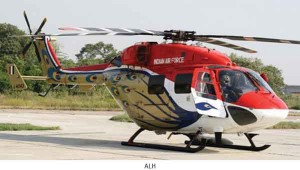 The workhorse of the IAF, the old Mi-8/Mi-17 fleet is making way for the new Mi-17 V5 types. The exact numbers are not in the public domain. However, they are inadequate for the vast repertoire of roles and tasks that are routinely assigned to the helicopter fleet across the nation’s vast expanse and long borders. The acid test is the large number of request for sorties that have to be declined on account of non-availability of helicopters. Substantial demands are continually being made by civil authorities for IAF helicopters to combat militancy. The Maoist affected states have IAF helicopters deployed but not in the numbers that the Ministry of Home Affairs (MHA) would like to have. Indeed, the MHA has decided to have its own fleet of helicopters specifically designed to fight militancy and has already inducted Mi-17 V5s.
The workhorse of the IAF, the old Mi-8/Mi-17 fleet is making way for the new Mi-17 V5 types. The exact numbers are not in the public domain. However, they are inadequate for the vast repertoire of roles and tasks that are routinely assigned to the helicopter fleet across the nation’s vast expanse and long borders. The acid test is the large number of request for sorties that have to be declined on account of non-availability of helicopters. Substantial demands are continually being made by civil authorities for IAF helicopters to combat militancy. The Maoist affected states have IAF helicopters deployed but not in the numbers that the Ministry of Home Affairs (MHA) would like to have. Indeed, the MHA has decided to have its own fleet of helicopters specifically designed to fight militancy and has already inducted Mi-17 V5s.
The IAF helicopter strength is less than that of Air Methods, an operator providing Helicopter Emergency Medical Services in the US…
Light Utility Helicopters
The Chetak and the Cheetah have been produced by HAL under license from Aerospatiale/Eurocopter. Around 230 of these are in Indian military service. The Chetak is a license-built Alouette III while the Cheetah is a version of the Eurocopter Aérospatiale SA 315B Lama, single-engine helicopter that combines the lighter Alouette II airframe with Alouette III components and power plant. French production faded out during the 1980s, and HAL has been increasingly forced to cannibalize components to keep ever reducing numbers in the air.
Paradoxically, HAL has just produced three Chetaks for Surinam. Eurocopter has kept a production line open for blades solely for the Indian market as rotor blades are a niche technology. However, HAL is finding it difficult to support these ageing and vintage airframes. The Main Gear Box, which transfers engine power to the rotor system, is a major component whose overhaul is proving to be a difficult task.
The Chetak/Cheetah fleet was to be replaced by 197 light helicopters to be purchased from an international vendor of which 64 were to come to the IAF. The RFP was first floated in 2003 and again in 2008 as the Reconnaissance and Surveillance Helicopter. Eurocopter AS-550 C3 Fennec and Russian Kamov Ka 226 were the final contenders and the arrangement would have involved licenced production by HAL. However, that process has been put on hold due to unspecified “technical reasons”. Meanwhile, HAL is developing the LUH which is a single-engine design with a maximum AUW of just over three tons. HAL Intends to produce 187 of these and expects that their date of operationalisation to be 2015. In all probability, these will replace the IAF’s Chetak/Cheetah fleet as the AS 550 C3/Ka226 decision appears to be stalled. In the interim, HAL’s ministrations are expected to keep the doddering Chetak/Cheetah machines in the air. The IAF is also in the process of inducting 54 Dhruvs, 38 utility and 16 armed versions.
Let us put the Dhruv into perspective here. The civil aviation philosophy stipulates a maximum AUW of 7000 lbs (3,175kg) as the magic figure above which civil helicopters must fly under more stringent regulations (in the US, FAR Part 29 rules apply to helicopters above 3,175kgs AUW as compared to FAR Part 27 rules for lighter ones). As far as military helicopters are concerned, there is no universally acknowledged classification by weight, by convention they are categorized into ‘light’, ‘medium lift’, and ‘heavy lift’ helicopters.
India is one of the world’s largest Mi-8 and Mi-17 operators with around 200 of these variants in service…
Light helicopters are those generally those under12,000 lbs (5,543kg) maximum All Up Weight (AUW) and Medium lift ones are those with AUWs from about 12,000 lbs to 45,000 lbs (20,400kg). Above this AUW lies the realm of the heavy lift. With a maximum AUW of 5.5 tonnes, the Dhruv ALH lies just on the borderline between ‘light’ and ‘medium’. In contrast, the Chetak has an AUW of 2,200kg and the Cheetah, just 1,950kg. While the Cheetah can carry three passengers, the Chetak can carry five in addition to a two-man crew.
The Dhruv ALH on the other hand, can carry 14 passengers besides the crew, is designed to meet civil and military requirements and meets FAR Part 29 specifications. Series production of Dhruv ALH started in 2001 and it incorporates a number of advanced technologies such as Integrated Dynamic System, Anti-resonance Isolation System, Full Authority Digital Electronic Control, Hingeless Main Rotor, Bearingless Tail Rotor and Automatic Flight Control System. While the LUH is a single engine design, the Dhruv variants are all twin engines.




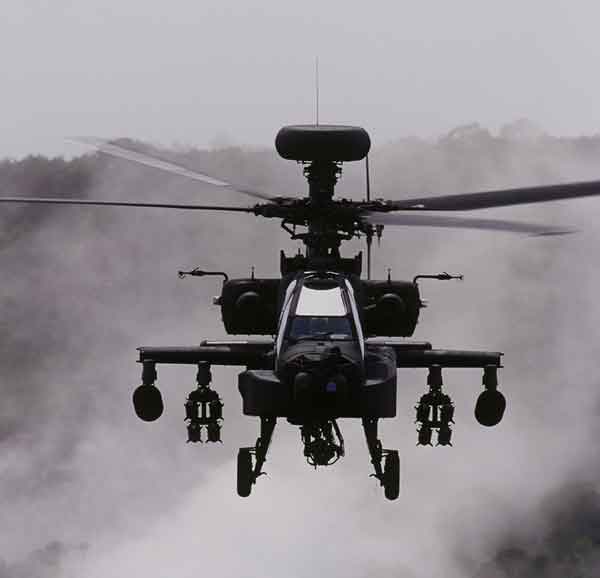
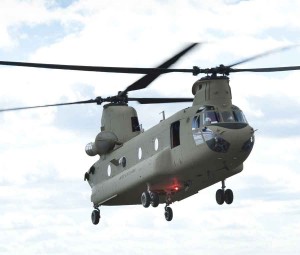
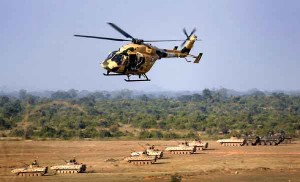
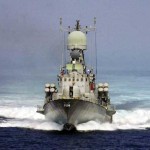
It is end 2016. The LUH is far from being operationalised. Chetak/Cheetah replacement is still on paper. Meanwhile, another Cheetah crash has taken 3 officers’ life. I share your concerns and hope the new year and the present government will wake up to the reality of dwindling numbers and lives lost to obsolete aircraft crashes. I had written a short article after the recent crash at Sukna. Sharing for information of those concerned.
What I am finding is that there is no co-ordination among defense officers. and you give more importance to weapon carrying vehicles . Fighter planes , helicopters, ships, Air craft carriers and submarines. I have no experience in defense. but I give preference to weapons. The accuracy, range and the warhead. Have you read the article “Attack Helicopter: Should India have them?” By Capt AG Bewoor”. If not please read the article . I do not find there is not much difference between LCH and AH-64D Apache. Apache carry more armaments than LCH. Both are AH. What are the solution to the problems raised by Capt AG Bewoor. Why are they lost so many helicopters in the Vietnam war and Afghan war ? My study goes that the weapons going to supply along with Aache is not suitable for a war against Pakistan. You will be aware that we lost Mi8 helicopter in the Kargil. War what is the reason? All these new helicopters are not useful in present condition particularly in the hilly areas.
Informative article. There are two issues. Firstly the acquisition of light helicopters has been delayed due to HAL stepping in with its own machine. As is usual where ever HAL steps in there will be delays and there are always teething problems with newly developed machines as there was with the ALH. We have fallen behind by eight years in the program to introduce light helicopters.
Secondly it makes sense to have Attack Helicopters integrated with the army. They will be operating in a tactical battle field environment which will be managed and controlled by the army. The Air force does have problems with doing away with Attack Helicopters, they aren’t exactly happy about the idea. Good military sense should prevail rather than issues of empire building. In Sri Lanka we always had to have an Army LO on board the Attack Helicopter to ensure they don’t end up shooting our own guys.
Before blaming HAL you should have read the article “Attack Helicopter: Should India have them?” By Capt AG Bewoor”. published in the Military & Aerospace a few days back. You people always crave for imported equipments. Please read the article and try to solve the problem. Also read my other comment.